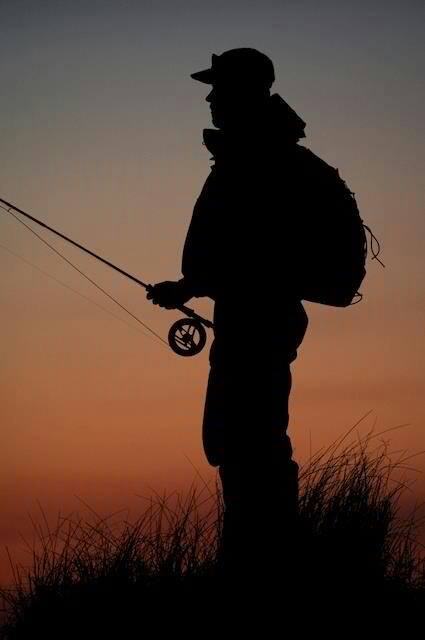Oregon has a wealth of fly fishing streams, so what follows makes only a dimple on the surface of its many excellent fisheries.
First, a little business: You will find that we have tackled this huge topic by dividing the state into geographic areas that loosely (but not entirely) follow the boundaries of one or more of the Oregon Department of Fish and Wildlife’s zones.
For example, we broke the inter-connected Klamath Basin rivers off from the massive Southeast Zone so we could better highlight more of the zone’s rich fisheries.
As another example, we combined three fishing zones across Western Oregon that aren’t as well known as their east-side counterparts as trout fisheries, but some of them not only are fantastic for trout but also have strong runs of steelhead and salmon.
In each area, we highlight one incredible river but also give a brief profile of other streams that at certain times may be every bit as good (possibly better) than our spotlighted destination. There is a plenty of room for opinion here.
As elsewhere on this site, following the links within the main article will take you to additional information about that topic. We are adding more of those all the time.
Without further delay, here are Oregon’s best fly fishing rivers:
Central Oregon’s Best: Deschutes River
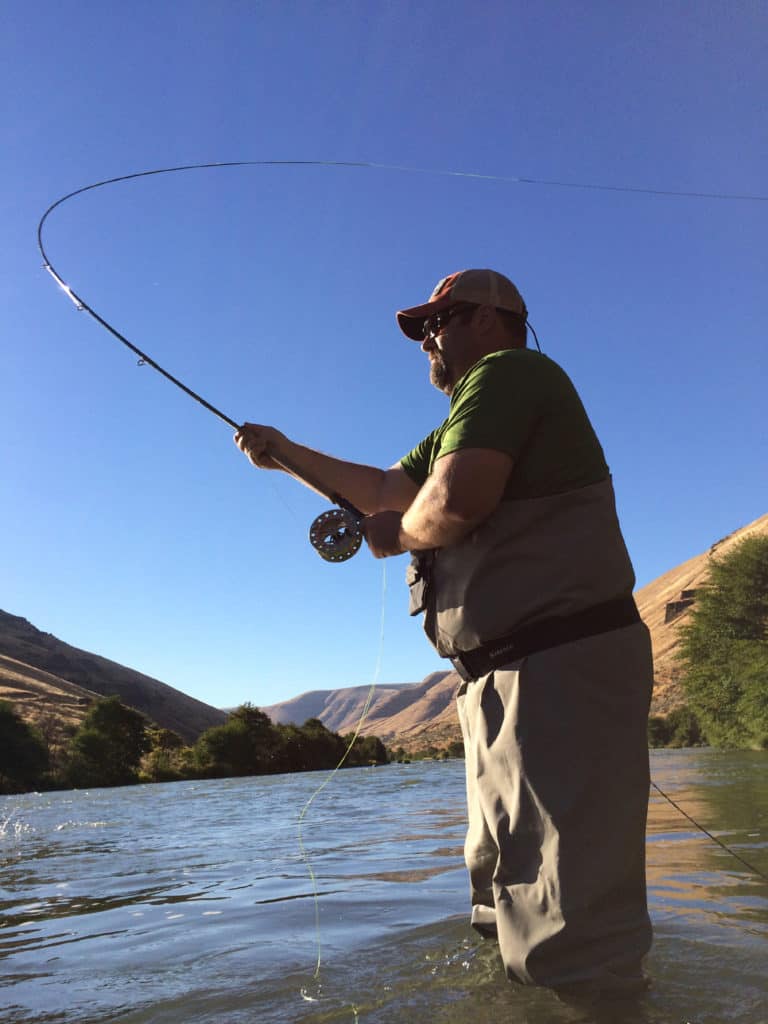
The lower 100 miles of this river, in north-central Oregon, is internationally known both for its incredible angling for native redside rainbow trout and for its run of reel-smoking summer steelhead.
Fly fishing author John Shewey calls it “the single best freshwater fishery in the West.”
The redsides are located throughout the Deschutes River and its tributaries.
The best sections on the lower river for trout often are upstream from the milky White River (enters Deschutes below Maupin) upriver to the Pelton Dam near Warm Springs.
Part of this stretch is open year round, with insect hatches and good catches possible just about any month, although winter weather can be daunting.
If you must name a peak time, May brings hatches of huge salmonflies and stoneflies that send both trout and anglers into a frenzy. (See: Fly Fishing the Deschutes River Salmon Fly Hatch.)
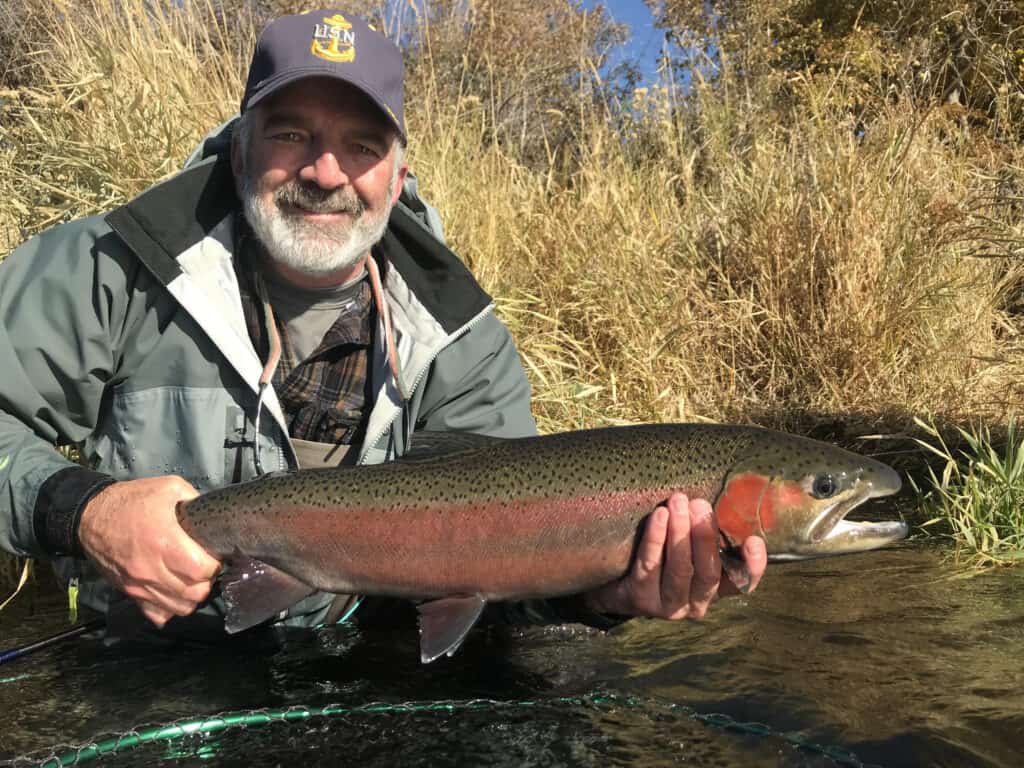
Summer steelhead start appearing at the river mouth near The Dalles in July, and fishing in the lower reaches closer to the Columbia can be fantastic in late summer and early fall.
Above Macks Canyon, including the Maupin area and up to Pelton, fishing is better from September into November. Early fall offers a great opportunity for both trout and steelhead.
Please note that there are special regulations covering the river where it borders the Warm Springs Indian Reservation, and boaters need permits on the lower river.
Above Lake Billy Chinook, redsides are available throughout the river system and brown trout and whitefish are fished in much of it.
There are some nice brook trout found in the upper reach from the headwaters (Little Lava Lake) down to Crane Prairie Reservoir. The state record brookie came from that section.
Overview article: Deschutes River Fishing.
More Great Fly Fishing Rivers in Central Oregon
Crooked River
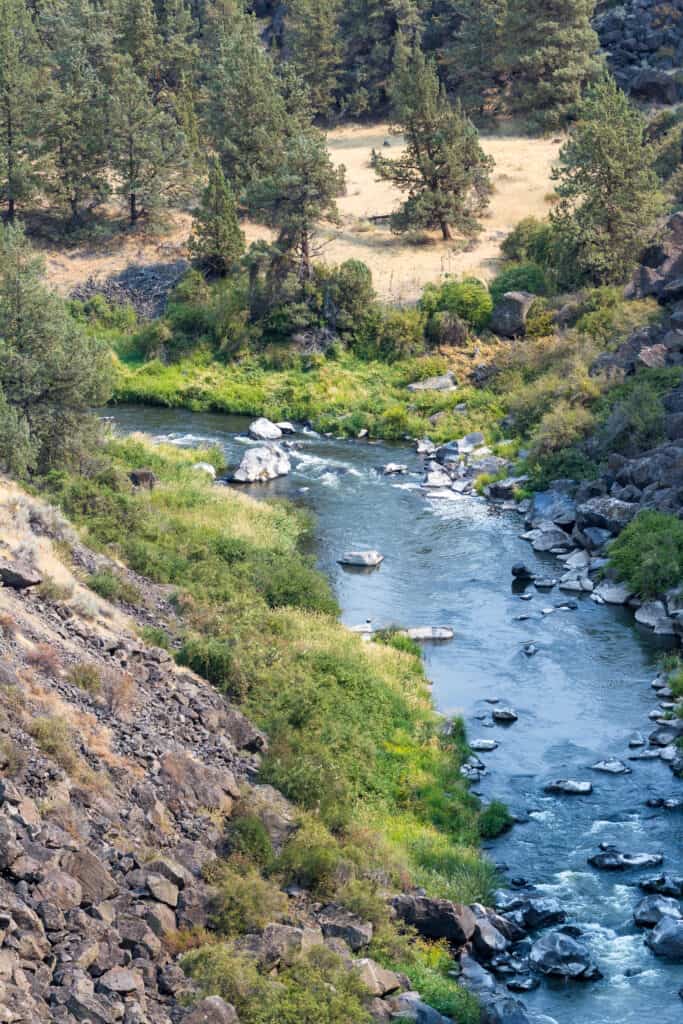
The redsides aren’t particularly big here, but they are incredibly plentiful and reasonably easy to catch.
This is a great spot for non-experts to catch trout on a fly (or other methods), particularly below Bowman Dam (Prineville Reservoir).
The mainstem is open all year. The forks upstream have some fishing opportunity as well. This river joins the Deschutes and Metolius at Lake Billy Chinook.
More: Crooked River Fishing.
Fall River
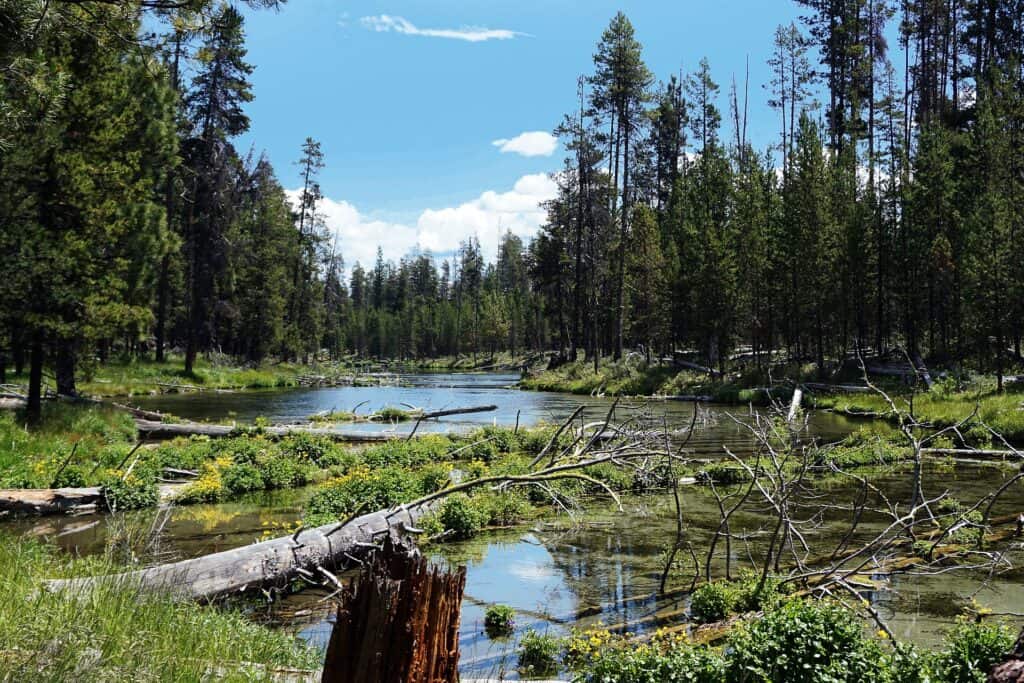
This spring-fed stream has very good trout fishing (and is only open to fly angling with barbless hooks). It is open year-round and part of the river is stocked from April into August.
It flows into the Deschutes off Century Drive near Sunriver.
More: Fall River Fishing.
Metolius River
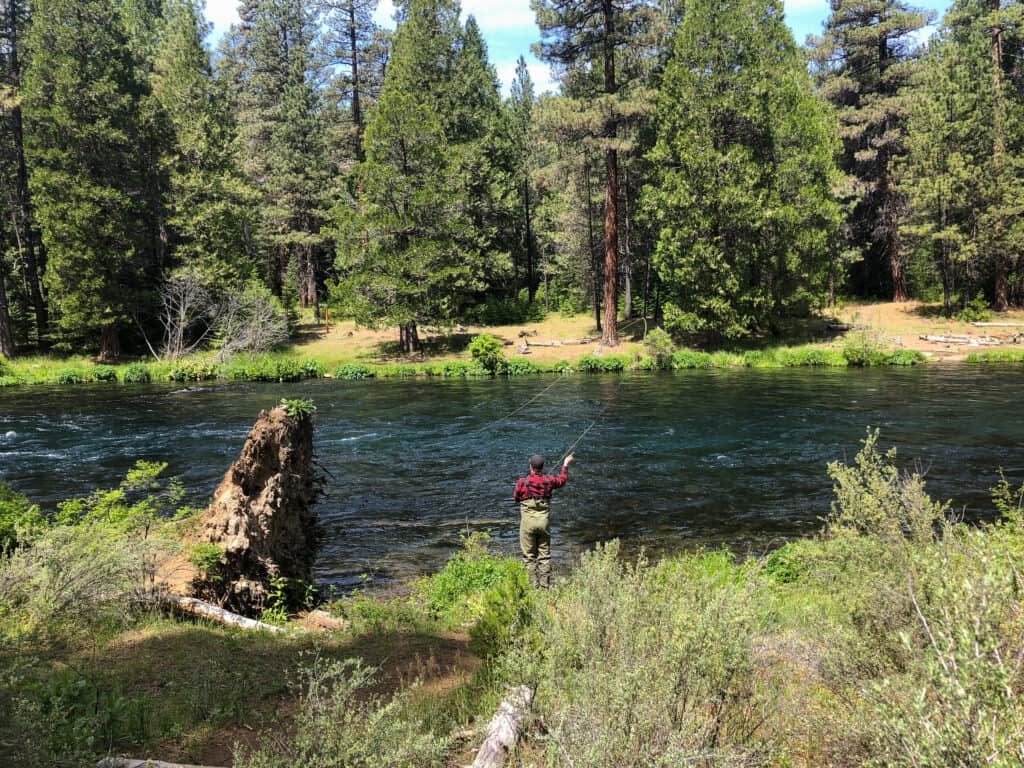
This river bubbles fully formed from a spring and flows through gorgeous ponderosa pine forests, where anglers find good numbers of native redsides and a rare fishery for bull trout (try streamers).
There also are some brown and brook trout in the mix, plus whitefish.
Read your regs carefully: There’s a year-round section, a fly fishing-only section and strictly catch-and-release fishing for this challenging river.
More: Metolius River Fishing.
More regional information: Best Fishing Rivers in Central Oregon.
Northeast Oregon’s Best: Grande Ronde River
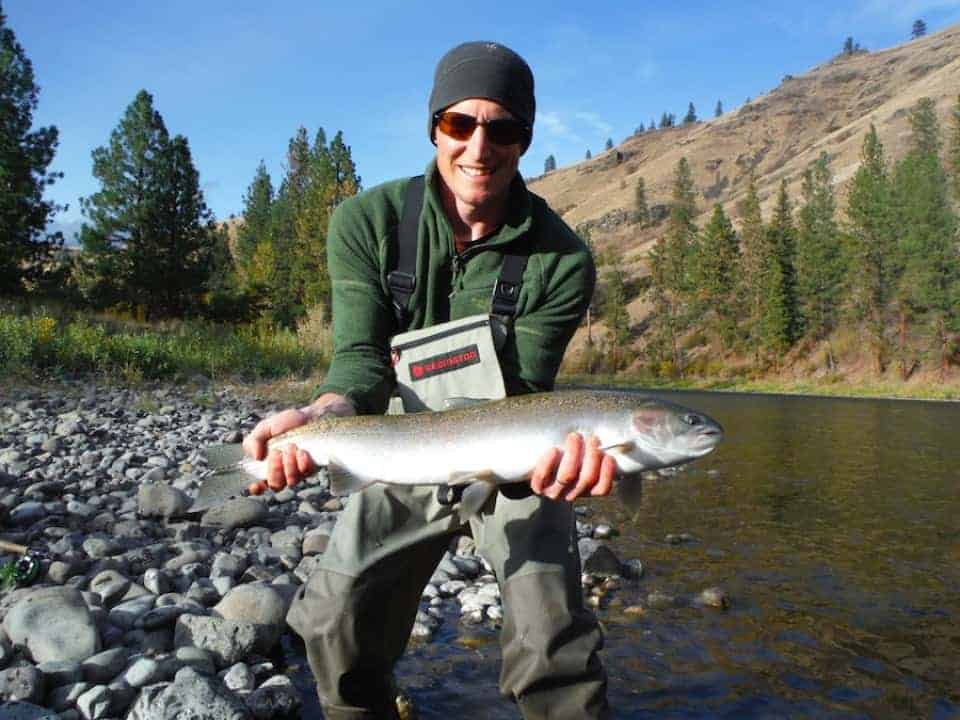
The Grande Ronde rises to the top in this region because of its large and feisty run of summer steelhead, which arrive this far inland in good numbers about September and provide an excellent fall fishery for both fly and conventional anglers.
The best fishing is below the mouth of the Wallowa River (a major tributary with great steelhead fishing) down to the state line, with the Troy area the first in Oregon to see action. (See: Northeast Oregon Summer Steelhead Fishing.)
The Grande Ronde also sports some rainbow trout fishing (release unharmed any unclipped trout, including incidentally caught bull trout).
In the lower section near Troy, there is a smallmouth bass fishery in the warm months, and these aggressive non-natives offer great action.
More: Fishing the Grande Ronde River.
More Great Fly Fishing Rivers in Northeast Oregon
Imnaha River
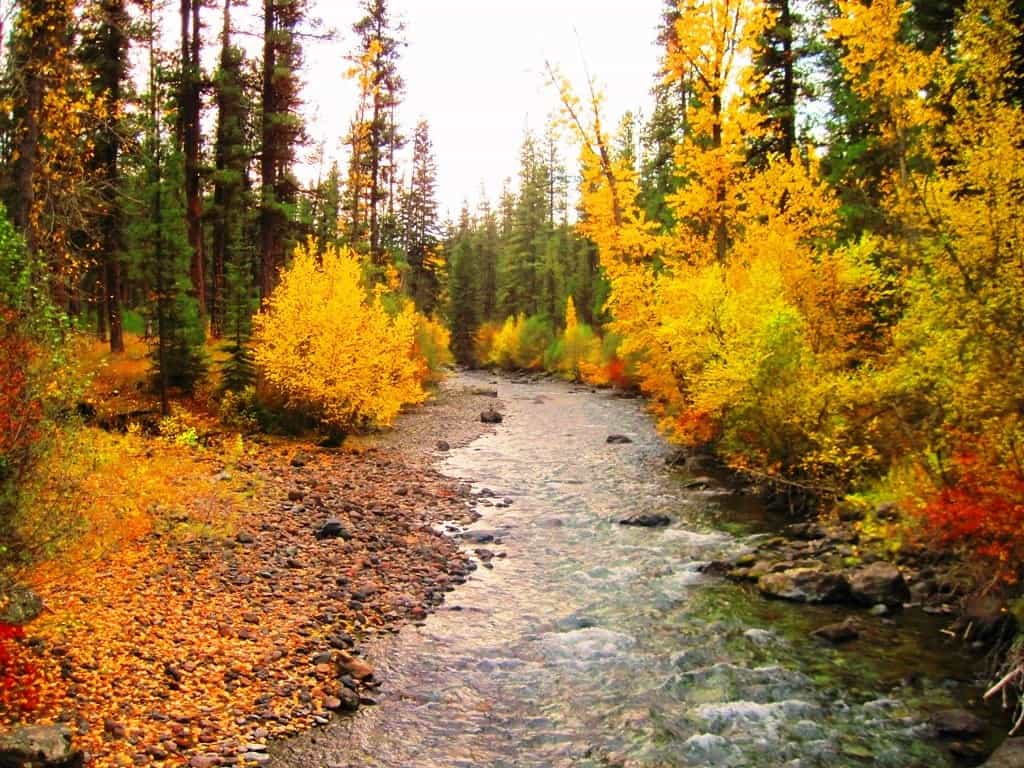
Wild rainbow trout and hatchery and wild steelhead fishing can be quite good, and some years there is a nice run of hatchery spring Chinook.
Catch-and-release fishing is allowed for bull trout, which can be numerous in the upper section of this remote river.
More: Fishing the Imnaha River
John Day River
One of the state’s best smallmouth bass fisheries also has a good fall steelhead fishery (mostly wild fish) as well as trout in the higher elevation tributaries.
Umatilla River
Summer steelhead, Chinook and coho salmon are fished in the lower sections, and trout fishing (much of it catch and release) can be quite good in upper watershed.
Be aware that Umatilla Indian Reservation fishing regulations are in effect on part of the river.
Walla Walla River
Better known to Washingtonians, this river heads in Oregon and has trout fishing in the forks. Steelhead fishing is being closed here due to years of poor returns.
Wallowa River
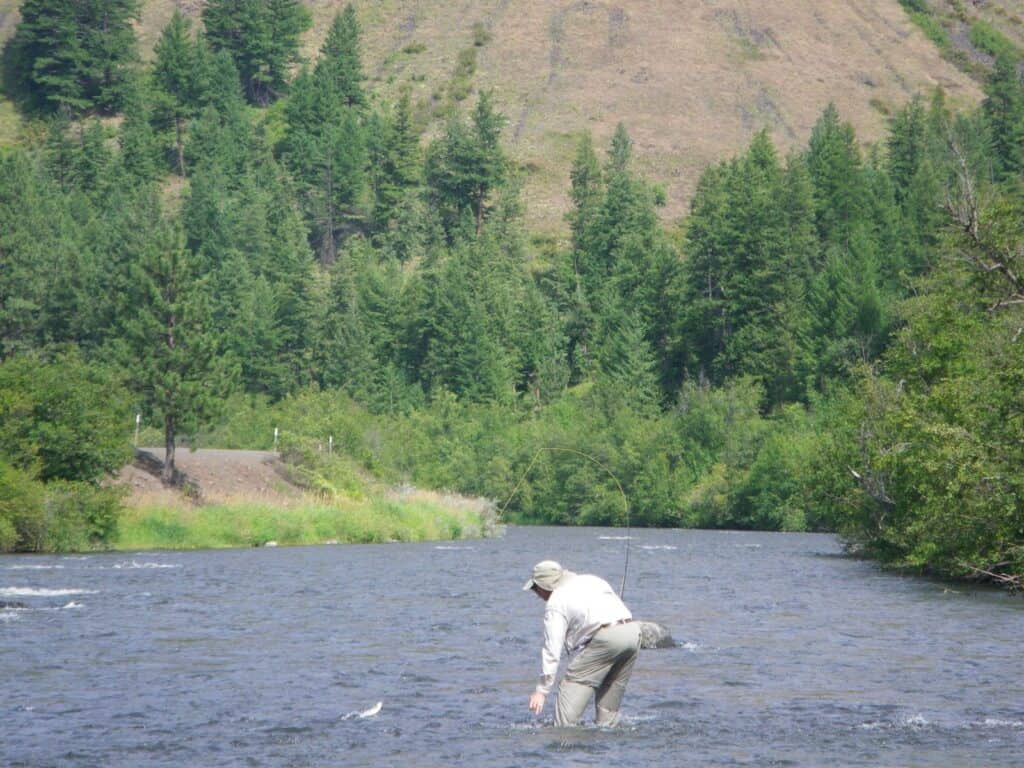
The lower sections are among Oregon’s top producers of hatchery steelhead, peaking fishing from late fall to early spring (during weather breaks).
There also are opportunities for rainbow trout and some brookies. Incidentally caught bull trout must be released unharmed.
More: Fishing the Wallowa River
Wenaha River
Another of Oregon’s few catch-and-release bull trout fisheries, plus good for redside rainbows and the occasional stray hatchery steelhead out of the Grande Ronde.
More regional information: Best Fishing in Northeast Oregon.
Klamath Basin’s Best: Williamson River
This river just north of Klamath Falls doesn’t have as many trout as the McKenzie or Deschutes. Nor does it have a steelhead run.
But the massive size of the trout caught in this somewhat difficult river will make you forget those short-comings.
These trout grow fat in the soupy rich waters of giant Upper Klamath Lake and venture into the Williamson and other tributaries to spawn.
Fish over 10 pounds are caught in the lower river, from Kirk Canyon Falls down to the lake, with the best fishing from mid-summer into October.
The upper river has more trout (both rainbows and brookies), but they run more typically sized and don’t migrate to the lake below the falls.
Fishing up there can be excellent but public access is pretty limited unless you’re a guest at one of several private ranches.
There also are brown trout in the lower Williamson River, but several tributaries named below are often better bets for this European transplant.
More: Fishing the Williamson River
More Great Fly Fishing Rivers in the Klamath Basin
Klamath River
The stretch below Keno Dam is known for good-sized rainbow trout, but it closes from mid-June through September.
You can also fish below J.C. Boyle Reservoir, although this area can be frustrating with fluctuating water levels.
Sprague River
This Williamson River tributary is known more for its brown trout than the big rainbows, but it has some of those, too. In the upper reaches, brook trout join the options.
More: Fishing the Sprague and Sycan Rivers
Spring Creek
This short tributary of the Williamson gets some big redband rainbows during the late summer spawning run and also has some nice brown trout.
Sycan River
This major tributary of the Sprague also has brown trout, mostly in the 20 miles below Sycan Marsh. But there’s more access upstream for redband rainbows and brook trout.
Wood River
This stream flows into Agency Lake, and it’s part of Upper Klamath Lake’s fishery for massive redband rainbows.
But while the Williamson is often a better bet for ‘bows, spend time on the Wood if you’re aiming for big brown trout.
More: Fishing the Wood River
More regional information: Best Fishing in Oregon’s Klamath Basin.
Southeast Oregon’s Best: Owyhee River
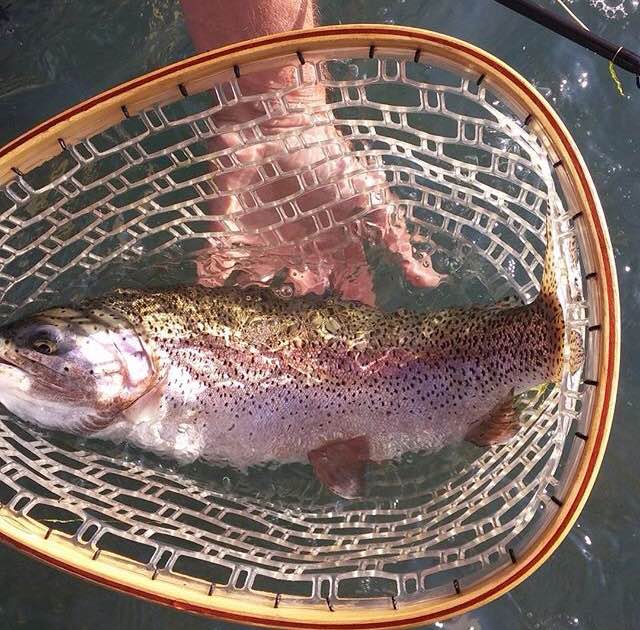
While many of Eastern Oregon’s rivers suffer mightily from hot weather and drought, the tailrace section below the massive Owyhee Reservoir benefits from the moderating effect on water temperature and flow.
The canyon section below the dam flows at a fairly lazy pace and is full of insect life, making it the perfect place to grow brown trout.
This is truly one of Oregon’s best brown trout fisheries, with good numbers of 20- to 24-inch fish available for anglers who can unlock the hatches.
The river is open all year and can even be fished in the winter if weather conditions allow, but it’s more reliably good beginning about March and continuing to improve in the summer months.
Some anglers avoid fishing the river from mid-October to the end of the year, when the browns spawn.
Brown trout must be released, but anglers have the option of taking home rainbow trout, though catch and release is common practice.
For more info, read Owyhee River Fly Fishing for Trout.
Lesser known is the very remote section above the reservoir, which is not a trout destination but is one of Oregon’s best smallmouth bass fisheries, though not well known.
While bass can be caught many ways, they are certainly willing to smash woolly buggers and other fly patterns.
More Great Fly Fishing Rivers in Southeast Oregon
Ana River
Steady water flows below Ana Reservoir keep this short but productive stream fishable year-round below Ana Reservoir. The area around Summer Lake is somewhat barren.
Chewaucan River
Good fishing for potentially large redband rainbow trout upstream from Paisley. There are brook trout in the headwaters.
Donner und Blitzen River
Often simply known as the Blitzen, this remote river features good numbers of wild redband rainbow trout.
Malheur River
Fishing for rainbow trout can be exceptional in the mainstem below the reservoirs in the early season but can quickly fall off quickly as water warms.
The Middle Fork is good below the dams, and it also offers good numbers of native redbands upstream in the mountains. The North Fork also has fishing for redbands.
More regional information: Best Fishing Rivers in Southeast Oregon.
Western Oregon’s Best: McKenzie River
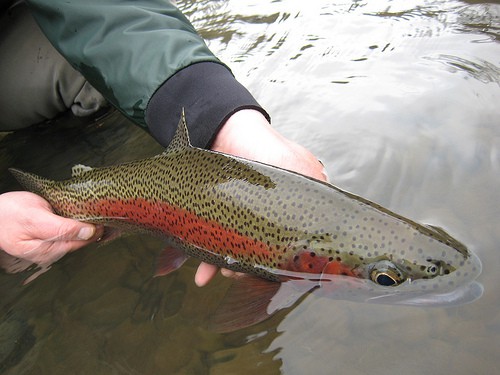
This gem of a stream offers the most reliably excellent fly fishing for trout west of the Cascade Range.
The reach that is responsible for much of the river’s reputation as a fly stream is actually the lowest section – from Hendricks Bridge to the confluence with the Willamette River – which runs closest to Springfield and Eugene.
Bank access is limited, but there is excellent boat access and plenty of knowledgeable fishing guides around.
This lowest section is open year-round and managed for wild trout, which must be released. Wild trout have intact adipose fins. Both native rainbow and cutthroat trout are commonly caught here.
Wild fish enthusiasts also fish the river above Forest Glen, the upper limit of the planted area. Again, you’ll find rainbows and cutthroats, but with smaller sizes but less angling pressure and seasonal closures.
If it’s dinner you’re after, fish from Hendricks Bridge upriver to about Forest Glen, which is heavily stocked with fin-clipped hatchery rainbow trout and lots of company from hardware anglers during the summer stocking season.
Check your regulations and ODFW’s stocking schedule.
For those looking for a challenge, the river also features runs of summer steelhead and spring Chinook salmon.
More: Fishing Oregon’s McKenzie River.
More Great Fly Fishing Rivers in Western Oregon
Clackamas River
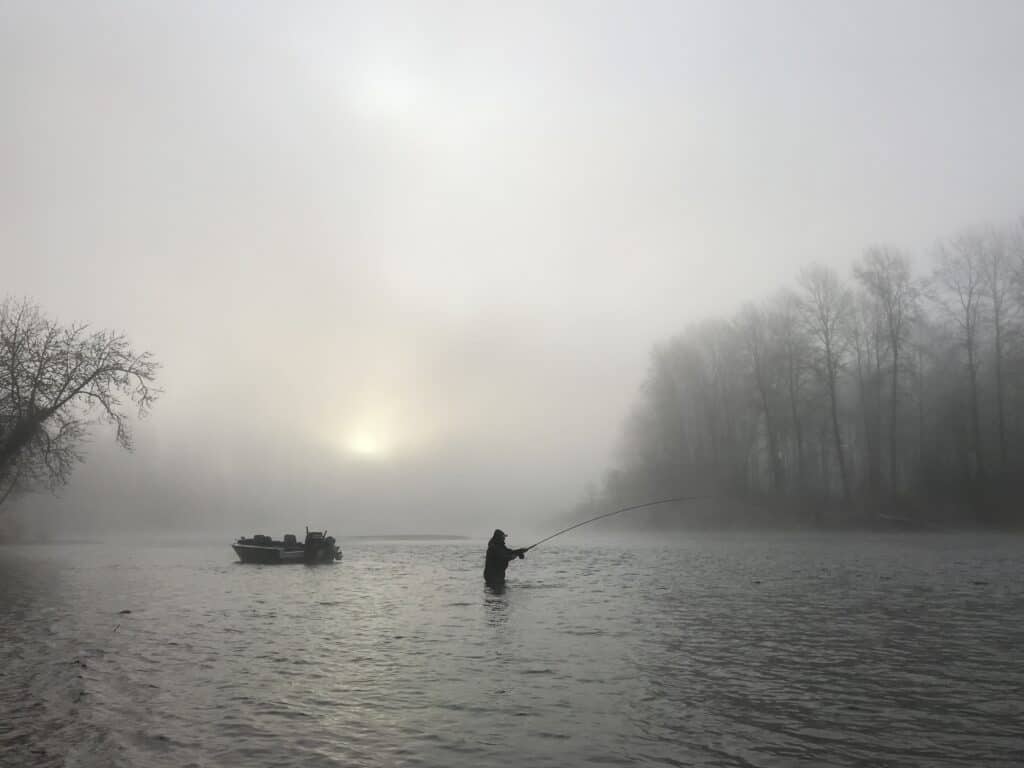
The lower river is close to Portland and can be fly-fished for summer and winter runs of steelhead.
The steelhead, as well as spring Chinook and fall coho salmon runs, are fished from the mouth up to the dams near Estacada.
Trout fishing opportunities are modest in the lower river, but the Oak Grove Fork offers some good opportunities for those willing to work for it. The section between Harriet Lake and Timothy Lake has a variety of native and non-native trout species and some harvest opportunities.
Nestucca River
There is something going on here all year, with fly anglers particularly focused on summer and winter steelhead and resident and sea-run cutthroat trout.
The section from Blaine upriver to the fishing deadline at Moon Creek is restricted to artificial flies and lures and can be quite good for steelhead and trout.
The river also boasts good fall and spring Chinook salmon runs.
North Santiam River
Best known among fly anglers for its run of summer steelhead, plus a lesser-known but quite good fishery for wild rainbow and cutthroat trout below the dams. Throw in some spring Chinook and fall coho for variety.
More: Santiam River Fishing.
North Umpqua River
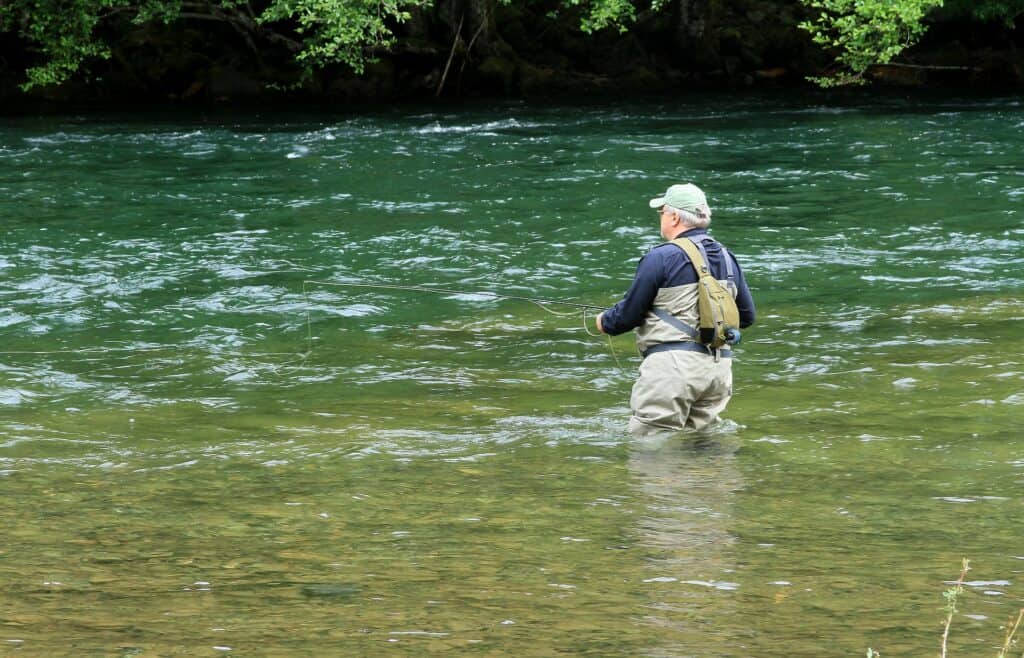
Legendary water for summer steelhead fly fishing, with additional runs of winter steelhead, spring Chinook and fall coho to spice things up.
Also, the basin offers some excellent trout water and a 31-mile stretch open only to fly fishers most of the year.
Fish the mainstem or South Umpqua for action-packed fly angling for smallmouth bass in the summer and a shot at hatchery steelhead in the winter.
Read: Umpqua River Fishing
Rogue River
Long and wild, Southern Oregon’s best overall salmon and steelhead river offers angling all year long.
Fly anglers pay particular attention to summer and winter run steelhead, but there also are spring and fall Chinook and fall coho salmon.
Fly anglers do well upstream from Grants Pass to below Lost Creek Dam for summer runs concentrated there in summer and early fall. There are some fly-only rules in effect late in season.
Wild trout fishing can be good below Lost Creek Dam, including a half-mile tailrace area fly fishers know as the “Holy Water.”
The river above Lost Creek Lake (and the reservoir itself) is well-stocked with hatchery rainbows.
Read: Rogue River Fishing.
Siletz River
Reliably good fishing for summer steelhead around Moonshine Park and upstream and very nice populations of cutthroat trout make this a go-to option for central coast fly angling.
There also are winter steelhead and fall Chinook salmon, with some coho in the mix.
Trask River
Feisty wild winter steelhead make a great catch-and-release fishery from mid-winter into early spring, with a chance of hooking a stray summer or winter hatchery-marked steelhead you can keep.
Add to that excellent fishing for resident and sea-run cutthroat trout.
Anglers ready for a serious challenge also have spring and fall runs of Chinook salmon and a hatchery run of coho salmon that charges up with the first good fall rains but fades quickly.
The forks open briefly each year while there is something to catch in the main river nearly all year.
Also see: Trask River Fishing.
Willamette River
The big river’s Middle Fork above Eugene can be a great alternative to the more crowded McKenzie for trout fishing, especially the section between Hills Creek and Lookout Point reservoirs, or explore the more remote areas farther upstream.
The mainstem around the McKenzie River confluence down to about Harrisburg and the Coast Fork have less-tapped fishing for wild trout, and the Coast Fork gets some modest hatchery trout plants.
Summer steelhead fishing is excellent in the Middle Fork below Dexter Dam and in the mainstem in Eugene. Hatchery spring Chinook run up the mainstem and Middle Fork to Dexter. A smaller number of springers turn into the Coast Fork.
More resources:
Now that you know where to go, see our article on the Best Fly Fishing Flies in the Pacific Northwest to make sure you go prepared.
For a broad overview of fishing opportunities, see our own Best Fishing in Every Oregon County.
Also, author John Shewey’s “On the Fly Guide to the Northwest” covers the state’s best fly fishing streams in some depth while Madelynne Diness Sheehan’s book “Fishing in Oregon” offers fewer fly fishing details on major fly fishing rivers but covers every possible water for those who love to explore.
Oregon Resources
ODFW Weekly Fishing Report
ODFW Trout Stocking Schedule
Oregon Fishing Regulations
National Weather Service

